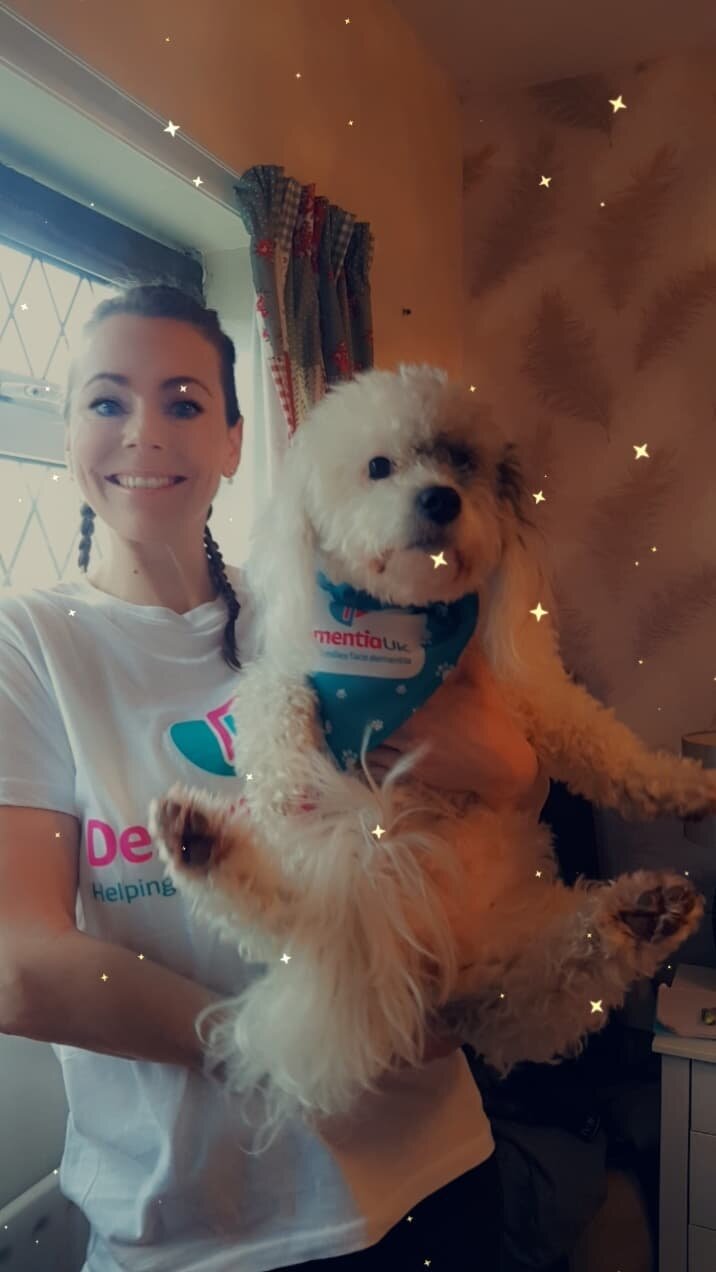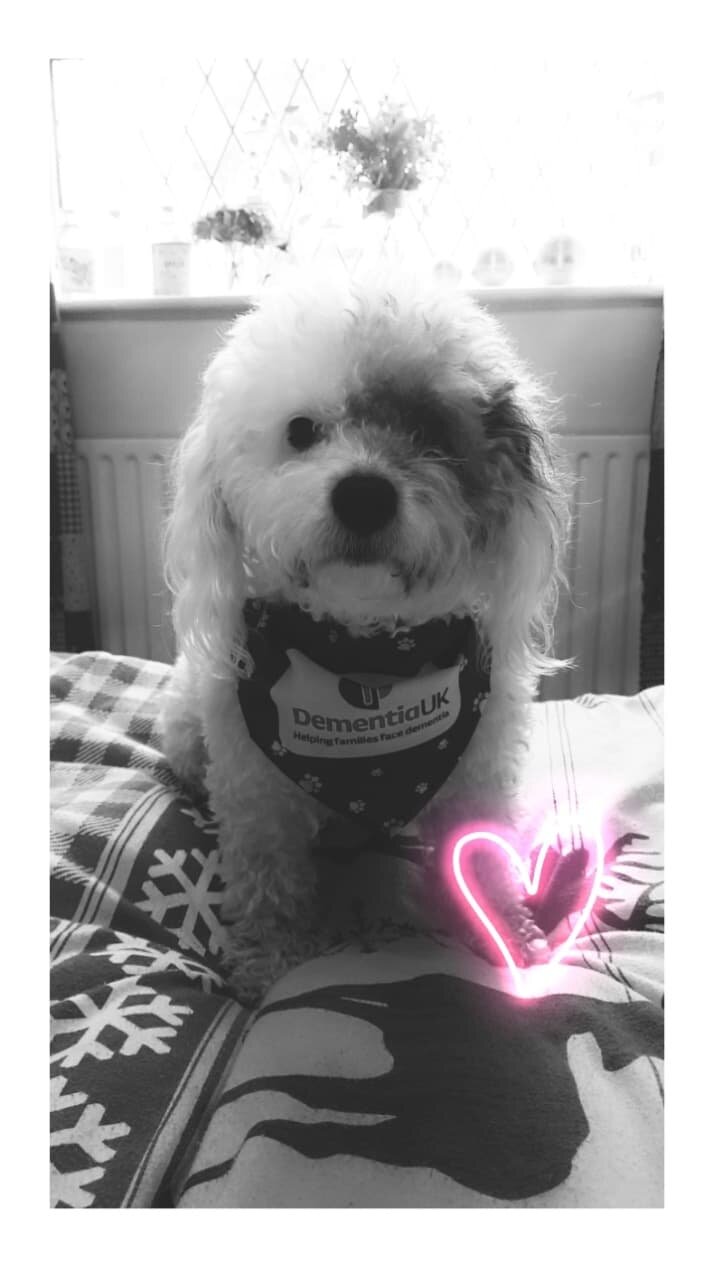How a Flying Cars innovation cycle helped Dementia UK mobilise the nations dog lovers
Just over six months ago, we started working with our friends at Dementia UK to create a new repeatable fundraising campaign with people who have a connection to dementia in their family. We were delighted to be working with them.
My Dad died from early-onset Alzheimer’s many years ago, and it was a severe decline to watch. Anne’s father is currently declining from vascular dementia, her mother caring for him alone at home as best she can in the pandemic. So we know just how much of a lifeline services such as Dementia UK’s Admiral Nurses can offer. I think it’s fair to say this cause is very personal to us both and will always remain so.
Fast forward to today, and the new fundraising campaign we co-created with the cross-organisational team at Dementia UK has had its first outing and been an overwhelming success.
What is the Flying Cars Innovation Process?
People commonly perceive that innovation involves sitting around in a room (or on a Zoom call) throwing ideas around until someone comes up with something brilliant because they are an ‘ideas person’.
It isn’t that. The Flying Cars way is a well-defined process that starts with redefining your brief and target audience. The most crucial element is ensuring all project concerns and hopes are laid out on the table by every stakeholder, right at the top of the project.
You’d be surprised how differently each person can interpret aims on a project, and getting agreement on the most important outcomes is worth spending a little time getting right. After all, if you don’t have buy-in, it doesn’t matter what ideas are generated if the enthusiasm isn’t there in the people who make things happen to make an idea a great success.
Once everyone is agreed on what success looks like, we begin conducting audience research, ideating (the ideas generation bit), building ideas up, shortlisting the best, adding testable mechanics then prototyping. Done well, prototyping means taking the most robust ideas through numerous iterations of testing with the target audience until one of them pivots into something everyone wants.
At that point, the strongest idea usually has so much evidence for audience appetite behind it that it would be impossible not to want to take it forward into a pilot.
The Flying Cars innovation process
Our process delivers results and comprises:
1. Redefining the brief
2. Deep and rich audience insight
3. Ideation sessions to generate ideas from
insight springboards
4. Rapid prototyping to test quickly and cheaply
5. Iterating and pivoting
6. Making a business case for investment
Make sure you get your brief right
After spending a day with the fabulous staff team from Dementia UK in a Redefining the Brief workshop, the audience chosen to engage in our future campaign was ‘Daughters’: women in their 40’s and 50’s that have parents with dementia and may have daughters themselves.
We recruited a panel of Daughters and spent time listening to them, understanding their lives and relationships, how they coped as Daughters, and how Covid-19 had affected them.
We learnt through our conversations that Daughters were keen to safeguard their future by looking after their health in body and mind. As we dug deeper, among other needs, it was clear that dog walking was a saving grace for many of our insight participants, a chance to maintain physical fitness and clear their minds from the everyday stresses and strains caused by lockdown and worrying about their parents.
Testing is crucial to optimise results
The crucial part of our process is in testing the ideas that come out of our ideation sessions. Testing ideas with a target audience at low cost and low volume is incredibly important. In this innovation cycle, the dog walking challenge was one of four ideas we audience-tested.
Our testing process has three elements, which we dip into depending on what we find when we pivot ideas, including qualitative, quantitative and smokescreen testing with the target audience. As we test, we iterate the ideas - changing small or large aspects of each of the ideas as we receive direct feedback. The ideas that go into the testing process look very different when they come out the other side. By constantly pivoting, we optimise and improve until we polish an idea-nub into something shiny that catches people’s attention.
Courage to follow the supporter-led insight
From the ideation session, a sponsored dog walk was born. We knew the audience insight had shown Daughters really valued their dog-walking time. It felt like a winner. The testing results showed it was. But surely dog-walking is best suited to an animal charity? People questioned what dogs have got to do with a dementia charity. Where is our right to play in this space? The insight and testing data gave a solid answer to these entirely reasonable questions. The Daughter community showed a strong appetite for supporting this campaign. One of the keys to success in innovation is to always listen to your audience needs.
For Daughters of those with dementia, their dogs were everything. Not only a way to help them get through lockdown and the worry about their parents, boosting their physical health, mental health and emotional health, but their dogs were also a source of self-identifying with others.
I am a Daughter of a parent with dementia. I am also a loving dog owner.
Therefore this community-driven fundraising campaign feels like it is created so specifically for me, I’m either going to take part, or I have to choose not to do it. Either way, I can’t ignore it. It speaks directly to me.
The team at Dementia UK were courageous in following the audience insight and trusting the results of the testing. Otherwise, it would have been possible for this idea never to see the light of day.
If a community works towards a common goal - in this case, raising money and awareness for Dementia UK so that families facing dementia can access specialist support - the impact can be huge. The Dog Walking Challenge shows how powerful network effects can be and the incredible power of creating a community of people who identify with each other.
We work in a fully collaborative manner
Flying Cars innovation cycles are always a collaborative, community-driven process. During each cycle, we collaborate with:
● The audience - different every time. We dig deep into their motivations, hopes, dreams and fears to find the nuggets of insight that we can turn into problem statements to try and solve in ideation
● Partner’s staff team - we work in plain sight and pass on all tools and techniques to the core project team, leaving you with a degree of independence and skills to run future projects yourselves through expert training
● Organisational Stakeholders - we help to ensure organisational buy-in from the start, quickly with minimal interruption, by involving key stakeholders at the right moments in fast ways.
● External partners - external stakeholders help to ensure a broad and diverse team to lend their experience and brainpower to designing future mega campaigns
“The first fundraising idea we’ve piloted has been very successful and is something we wouldn’t have thought of had we not gone through the insight-led process with Flying Cars”
Execution, execution, execution
But, as with any of the innovation work we do, we know that it doesn’t matter how great an idea we help generate is, how robustly it’s been tested if the concept isn’t then executed well, keeping in mind all the insight we uncover. Paws for Dementia, March Dog Walking Challenge was a great idea executed brilliantly by the team at Dementia UK and their delivery partners. It was a success because so much was done ‘just right’ long after we handed the proposition over.
Success in fundraising innovation has many factors; insight-led ideas generation is one. But, great or poor marketing delivery and stewardship will make or break a great idea.
We know from our side that to get to a point where you have everyone on board to turn a great idea into a success, long after an innovation agency has left you with the tools, is this. You need a determined project lead like Emma Saunders, an engaged project team willing to get stuck in, and a CEO like Hilda Hayo, who shows support by walking the talk of innovation by participating and contributing, something that more CEO’s could learn from.
For Anne and me, our parental attachment to the cause aside, we thoroughly loved working with Dementia UK on this innovation cycle. And now that they have the tools and methodologies to begin new pipelines independently, we’ll be watching this space to see what their dream team launches other great ideas over the coming months.
So - that was the March Dog Walking Challenge - it took a lot of effort to walk all those miles.
And what did the participants think of the event? See some Pawsome pics below!



To talk to us about how we can run an innovation cycle with you email hello@flyingcarsinnovation.com
To become more strategic in your Innovation programme try our free Innovation Growth Diagnostic




